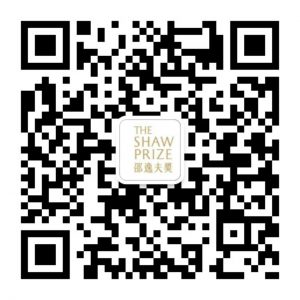I was born in North London in 1955 to Greek Cypriot parents. My father came to London from Cyprus in 1949, and my mother came as a 14-year- old with her family in 1951. When I was five years old, my father opened a fish and chip shop, following in the footsteps of many Cypriot immigrants in North London. As a child, the only books in the house were a children’s encyclopedia. I read these volumes from cover to cover. I was especially inspired by the articles on science and by pictures of the 200-inch telescope at Mt. Palomar, which was completed in 1949. To this day, I have posters of this telescope in my offices at home and at work as a reminder of why I do astronomy.
At school, I was strongly influenced by a physics teacher, Dick Yarrow, who encouraged me to apply to Oxford University. I won an Exhibition to study Physics at Keble College, but unfortunately, my experience at Oxford was not particularly happy. Coming from a state school and an immigrant background, I felt out of place. I also found the course to be desperately dull.
After Oxford, I began a PhD with a new cosmology group at the University of Durham. Richard Ellis, then a postdoc, was the de facto leader of this fledgling group. I felt much more at home in the North East of England and flourished in an intellectual environment in which I was free to investigate whatever I wanted. I completed several projects, but the main focus of my PhD thesis involved developing a novel computer code to simulate the formation of structure in the Universe.
Following my PhD, I moved to a postdoctoral position at Berkeley. This is where I met Dick Bond. I decided to broaden my research and was on the lookout for new problems. In a phone call, Mark Davis mentioned a recent Russian experiment that claimed a detection of a mass for the electron neutrino of about 30 eV (which turned out to be wrong). I discussed this with Dick, who was working on neutrino interactions in supernovae, and we began to think about the implications of weakly interacting dark matter and the formation of structure in the Universe. This was the start of a really productive collaboration that led to the work recognised by our Shaw Prize.
Although light neutrinos (a form of hot dark matter) did not lead to a viable theory, it was clear that a much heavier, weakly interacting particle (cold dark matter) would provide a better match to observations. In the early 1980s, theorists made a very important advance, showing that quantum fluctuations could be stretched in scale during an inflationary phase in the early Universe to form the structure that we see today. The evolution of such fluctuations at late times depends sensitively on the matter content of the Universe and becomes an important test of the nature of dark matter. Dick and I made detailed investigations of the temperature anisotropies of the cosmic microwave background (CMB) radiation expected in inflationary cold dark matter Universes. At about the same time, I resurrected the computer code from my PhD thesis and began studying structure formation in cold dark matter Universes with my colleagues Marc Davis (who set me on the path of non-baryonic dark matter), Carlos Frenk, and Simon White.
In 1988, I moved from a junior faculty position at Cambridge to take up the Savilian Chair and became head of the Astrophysics Department at Oxford. Most of my work over the next few years was devoted to studying structure in the Universe. With my PhD students, we constructed a large catalogue of galaxies with the aim of verifying the predictions of the cold dark matter cosmology. However, our results showed evidence for more structure at large scales than expected in this theory. We suggested that this discrepancy could be resolved by including dark energy in addition to dark matter, a proposal that was not well received until observations of distant supernovae by Perlmutter, Riess, Schmidt, and collaborators gave strong evidence for an accelerating Universe. Their pioneering work marks the birth of the ΛCDM cosmology.
Following the discovery of anisotropies of the CMB by the COBE satellite, I became involved with the European Space Agency’s Planck Satellite, which launched in 2009. I moved from Oxford back to Cambridge in 1997, and much of my research from 2008 onwards was based on observations of the CMB with Planck. Planck has confirmed the ΛCDM cosmology to unprecedented precision. I would never have anticipated that the calculations that Dick and I had made about 30 years earlier would have been matched so accurately by experiment. The Planck project ended in 2018. Since then, I have been investigating whether there are any discrepancies or hints of new physics beyond ΛCDM, using a range of cosmological probes, including the CMB, weak gravitational lensing, supernovae, and surveys of large-scale structure in the Universe.
21 October 2025 Hong Kong
